
Politicians, business leaders, climate scientists, interest groups and journalists from across the world have been meeting in Dubai at the COP28 climate summit (the 28th annual meeting of the Conference of the Parties (COP) to the United Nations Framework Convention on Climate Change (UNFCCC)). The meeting comes at a time when various climate tipping points are being reached or approached – some bad, but some good. Understanding these tipping points and their implications for society and policy requires understanding not only the science, but also the various economic incentives affecting individuals, businesses, politicians and societies.
Tipping points
A recent report (see first reference in articles section below) identified various climate tipping points. These are when global temperatures rise to a point where various domino effects occur. These are adverse changes to the environment that gather pace and have major effects on ecosystems and the ability to grow food and support populations. These, in turn, will have large effects on economies, migration and political stability.
 According to the report, five tipping points are imminent with the current degree of global warming (1.2oC). These are:
According to the report, five tipping points are imminent with the current degree of global warming (1.2oC). These are:
- Melting of the Greenland ice sheet;
- Melting of the West Antarctic ice sheet;
- Death of warm-water coral reefs;
- Collapse of the North Atlantic Subpolar Gyre circulation, which helps to drive the warm current that benefits Western Europe;
- Widespread rapid thawing of permafrost, where tundra without snow cover rapidly absorbs heat and releases methane (a much more powerful source of global warming than CO2).
With global warming of 1.5oC, three more tipping points are likely: the destruction of seagrass meadows, mangrove swamps and the southern part of the boreal forests that cover much of northern Eurasia. As the temperature warms further, other tipping points can interact in ways that drive one another, resulting in tipping ‘cascades’.
But the report also strikes an optimistic note, arguing that positive tipping points are also possible, which will help to slow global warming in the near future and possibly reverse it further in the future.

The most obvious one is in renewable energy. Renewable power generation in many countries is now cheaper than generation from fossil fuels. Indeed, in 2022, over 80% of new electricity generation was from solar and wind. And as it becomes cheaper, so this will drive investment in new renewable plants, including in small-scale production suitable for use in developing countries in parts not connected to a grid. In the vehicle sector, improved battery technology, the growth in charging infrastructure and cheaper renewable sources of electricity are creating a tipping point in EV take-up.
Positive tipping points can take place as a result of changing attitudes, such as moving away from a meat-intensive diet, avoiding food waste, greater use of recycling and a growth in second-hand markets.
But these positive tipping points are so far not strong enough or quick enough. Part of the problem is with economic incentives in market systems and part is with political systems.
Market failures
Economic decisions around the world of both individuals and firms are made largely within a market environment. But the market fails to take into account the full climate costs and benefits of such decisions. There are various reasons why.
Externalities. Both the production and consumption of many goods, especially energy and transport, but also much of agriculture and manufacturing, involve the production of CO2. But the costs of the resulting global warming are not born directly by the producer or consumer. Instead they are external costs born by society worldwide – with some countries and individuals bearing a higher cost than others. The result is an overproduction or consumption of such goods from the point of view of the world.
 The environment as a common resource. The air, the seas and many other parts of the environment are not privately owned. They are a global ‘commons’. As such, it is extremely difficult to exclude non-payers from consuming the benefits they provide. Because of this property of ‘non-excludability’, it is often possible to consume the benefits of the environment at a zero price. If the price of any good or service to the user is zero, there is no incentive to economise on its use. In the case of the atmosphere as a ‘dump’ for greenhouse gases, this results in its overuse. Many parts of the environment, however, including the atmosphere, are scarce: there is rivalry in their use. As people increase their use of the atmosphere as a dump for carbon, so the resulting global warming adversely affects the lives of others. This is an example of the tragedy of the commons – where a free resource (such as common land) is overused.
The environment as a common resource. The air, the seas and many other parts of the environment are not privately owned. They are a global ‘commons’. As such, it is extremely difficult to exclude non-payers from consuming the benefits they provide. Because of this property of ‘non-excludability’, it is often possible to consume the benefits of the environment at a zero price. If the price of any good or service to the user is zero, there is no incentive to economise on its use. In the case of the atmosphere as a ‘dump’ for greenhouse gases, this results in its overuse. Many parts of the environment, however, including the atmosphere, are scarce: there is rivalry in their use. As people increase their use of the atmosphere as a dump for carbon, so the resulting global warming adversely affects the lives of others. This is an example of the tragedy of the commons – where a free resource (such as common land) is overused.
Inter-generational problems. The effect of the growth in carbon emissions is long term, whereas the benefits are immediate. Thus consumers and firms are frequently prepared to continue with various practices, such as driving, flying and using fossil fuels for production, and leave future generations to worry about their environmental consequences. The problem, then, is a reflection of the importance that people attach to the present relative to the future.
Ignorance. People may be contributing to global warming without realising it. They may be unaware of which of the goods they buy involve the release of carbon in their production or how much carbon they release when consumed.
Political failures
Governments, whether democratic or dictatorships, face incentives not to reduce carbon emissions – or to minimise their reduction, especially if they are oil producing countries. Reducing carbon involves short-term costs to consumers and this can make them unpopular. It could cost them the next election or, in the case of dictatorships, make them vulnerable to overthrow. What is more, the oil, coal and gas industries have a vested interest in continuing the use of fossil fuels. Such industries wield considerable political power.
 Even if governments want the world to reduce carbon emissions, they would rather that the cost of doing so is born less by their own country and more by other countries. This creates a prisoner’s dilemma, where the optimum may be for a large global reduction in carbon emissions, but the optimum is not achieved because countries individually are only prepared to reduce a little, expecting other countries to reduce more. Getting a deal that is deemed ‘fair’ by all countries is very difficult. An example is where developing countries, may feel that it is fair that the bulk of any cuts, if not all of them, should be made by developed countries, while developed countries feel that fixed percentage cuts should be made by all countries.
Even if governments want the world to reduce carbon emissions, they would rather that the cost of doing so is born less by their own country and more by other countries. This creates a prisoner’s dilemma, where the optimum may be for a large global reduction in carbon emissions, but the optimum is not achieved because countries individually are only prepared to reduce a little, expecting other countries to reduce more. Getting a deal that is deemed ‘fair’ by all countries is very difficult. An example is where developing countries, may feel that it is fair that the bulk of any cuts, if not all of them, should be made by developed countries, while developed countries feel that fixed percentage cuts should be made by all countries.
Policy options
If the goal is to tackle climate change, then the means is to reduce the amount of carbon in the atmosphere (or at the least to stop its increase – the net zero target). There are two possibilities here. The first is to reduce the amount of carbon emissions. The second is to use carbon capture and storage or carbon sequestration (e.g. through increased forestation).
 In terms of reducing carbon emissions, the key is reducing the consumption of carbon-producing activities and products that involve emissions in their production. This can be achieved through taxes on such products and/or subsidies on green alternatives (see the blog ‘Are carbon taxes a solution to the climate emergency?‘). Alternatively carbon-intensive consumption can be banned or phased out by law. For example, the purchase of new petrol or diesel cars cold be banned beyond a certain date. Or some combination of taxation and regulation can be used, such as in a cap-and-trade system – for example, the EU Emissions Trading System (EU ETS) (see the blog ‘Carbon pricing in the UK‘). Then there is government investment in zero carbon technologies and infrastructure (e.g. electrifying railways). In practice, a range of policy instruments are needed (see the blog ‘Tackling climate change: “Everything, everywhere, all at once”‘).
In terms of reducing carbon emissions, the key is reducing the consumption of carbon-producing activities and products that involve emissions in their production. This can be achieved through taxes on such products and/or subsidies on green alternatives (see the blog ‘Are carbon taxes a solution to the climate emergency?‘). Alternatively carbon-intensive consumption can be banned or phased out by law. For example, the purchase of new petrol or diesel cars cold be banned beyond a certain date. Or some combination of taxation and regulation can be used, such as in a cap-and-trade system – for example, the EU Emissions Trading System (EU ETS) (see the blog ‘Carbon pricing in the UK‘). Then there is government investment in zero carbon technologies and infrastructure (e.g. electrifying railways). In practice, a range of policy instruments are needed (see the blog ‘Tackling climate change: “Everything, everywhere, all at once”‘).
With carbon capture, again, solutions can involve a mixture of market mechanisms and regulation. Market mechanisms include subsidies for using carbon capture systems or for afforestation. Regulation includes policies such as requiring filters to be installed on chimneys or banning the felling of forests for grazing land.
The main issue with such policies is persuading governments to adopt them. As we saw above, governments may be unwilling to bear the short-term costs to consumers and the resulting loss in popularity. Winning the next election or simple political survival may be their number-one priority.
COP28
The COP28 summit concluded with a draft agreement which called for the:
transitioning away from fossil fuels in energy systems, in a just, orderly and equitable manner, accelerating action in this critical decade, so as to achieve net zero by 2050 in keeping with the science.
This was the first COP summit that called on all nations to transition away from fossil fuels for energy generation. It was thus hailed as the biggest step forward on tackling climate change since the 2015 Paris agreement. However, there was no explicit commitment to phase out or even ‘phase down’ fossil fuels. Many scientists, climate interest groups and even governments had called for such a commitment. What is more, there was no agreement to transition away from fossil fuels for transport, agriculture or the production of plastics.
If the agreement is to be anything more than words, the commitment must now be translated into specific policy actions by governments. This is where the real test will come. It’s easy to make commitments; it’s much harder to put them into practice with policy measures that are bound to impose costs on various groups of people. What is more, there are powerful lobbies, such as the oil, coal and steel industries, which want to slow any transition away from fossil fuels – and many governments of oil producing countries which gain substantial revenues from oil production.
One test will come in two years’ time at the COP30 summit in the Amazonian city of Belém, Brazil. At that summit, countries must present new nationally determined commitments that are economy-wide, cover all greenhouse gases and are fully aligned with the 1.5°C temperature limit. This will require specific targets to be announced and the measures required to achieve them. Also, it is hoped that by then there will be an agreement to phase out fossil fuels and not just to ‘transition away’ from them.
Reasons for hope
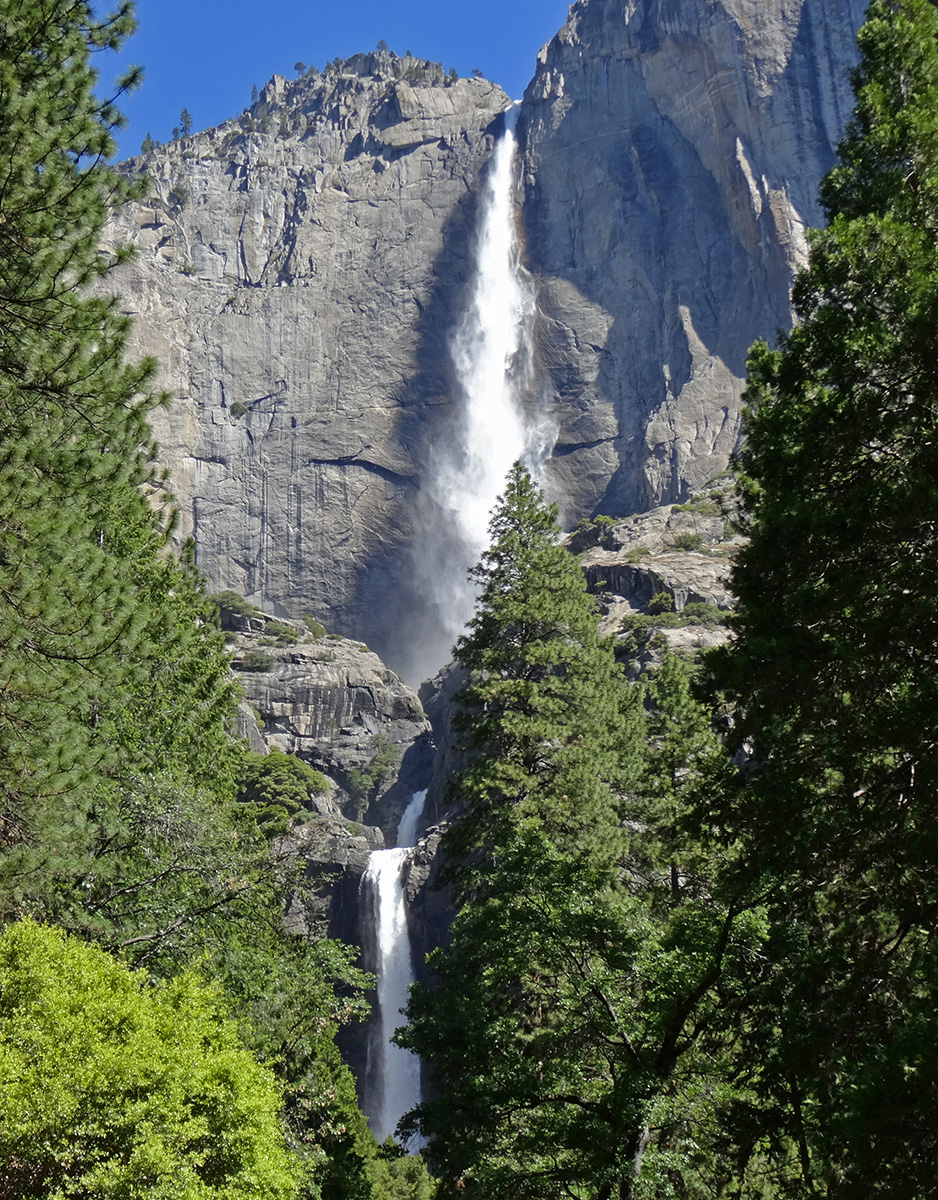 Despite the unwillingness of many countries, especially the oil and coal producing countries, to phase out fossil fuels, there are reasons for hope that global warming may be halted and eventually even reversed. Damage will have been done and some tipping points may have been reached, but further tipping points may be averted.
Despite the unwillingness of many countries, especially the oil and coal producing countries, to phase out fossil fuels, there are reasons for hope that global warming may be halted and eventually even reversed. Damage will have been done and some tipping points may have been reached, but further tipping points may be averted.
The first reason is technological advance. Research, development and investment in zero carbon technologies is advancing rapidly. As we have seen, power generation from wind and solar is now cheaper than from fossil fuels. And this cost difference is likely to grow as technology advances further. This positive tipping point is becoming more rapid. Other technological advances in transport and industry will further the shift towards renewables and other advances will economise on the use of power.
The second is changing attitudes. With the environment being increasingly included in educational syllabuses around the world and with greater stress on the problems of climate change in the media, with frequent items in the news and with programmes such as the three series of Planet Earth, people are becoming more aware of the implications of climate change and how their actions contribute towards the problem. People are likely to put increasing pressure on businesses and governments to take action. Growing awareness of the environmental impact of their actions is also affecting people’s choices. The negative externalities are thus being reduced and may even become positive ones.
Articles
- Global Tipping Points
University of Exeter, Global Systems Institute, Timothy M. Lenton et al. (6/12/23)
- Report: Pivotal moment for humanity as tipping point threats and opportunities accelerate
Phys.org (6/12/23)
- Earth is closing in on catastrophic climate ‘tipping points’, over 200 scientists warn
Independent, Vishwam Sankaran (6/12/23)
- Earth on verge of five catastrophic climate tipping points, scientists warn
The Guardian, Ajit Niranjan (6/12/23)
- Cop28: King Charles warns of ‘vast, frightening experiment’ on natural world
The Guardian, Fiona Harvey, Nina Lakhani, Aletha Adu, Damian Carrington, Patrick Greenfield and Oliver Milman (1/12/23)
- UK likely to miss Paris climate targets by wide margin, analysis shows
The Guardian, Fiona Harvey (5/12/23)
- Water and the High Price of Bad Economics
Project Syndicate, Mariana Mazzucato , Partha Dasgupta, Nicholas Stern, and Johan Rockström (1/12/23)
- Fossil fuels: Can humanity really kick its addiction?
BBC News, Justin Rowlatt (10/12/23)
- Five climate change solutions under the spotlight at COP28
BBC News, Mark Poynting (6/12/23)
- COP28: Five reasons for optimism on climate
BBC News, Matt McGrath (8/12/23)
- COP28 Agreement Signals “Beginning of the End” of the Fossil Fuel Era
UN Climate Press Release (13/12/23)
- COP28 climate summit ends with deal to transition away from fossil fuels
CNBC, Ruxandra Iordache and Sam Meredith (13/12/23)
- Cop28 landmark deal agreed to ‘transition away’ from fossil fuels
The Guardian, Adam Morton, Fiona Harvey and Patrick Greenfield (13/12/23)
- COP28 draft agreement drops phaseout of fossil fuels
Financial Times, Attracta Mooney, Aime Williams and Alice Hancock (13/12/23)
- Examining COP28’s potential impact on climate change
BBC News, Matt McGrath (13/12/23)
- Cop28 failed to halt fossil fuels’ deadly expansion plans – so what now?
The Guardian, Damian Carrington (14/12/23)
- The momentum of the solar energy transition
Nature Communications, Femke Nijsse, Jean-Francois Mercure, Nadia Ameli, Francesca Larosa, Sumit Kothari, Jamie Rickman, Pim Vercoulen and Hector Pollitt (17/10/23)
 COP28: Bill Gates on climate optimism, wealth and the human condition
COP28: Bill Gates on climate optimism, wealth and the human conditionBBC News on YouTube, Bill Gates (2/12/23)
- From the Paris agreement to COP28, how oil and gas giants try to influence the global climate agenda
The Conversation, Alain Naef (8/12/23)
- COP28: Phasedown or Phaseout, Fossil Fuels Must be Addressed to Meet 1.5C Goal
Forbes, Felicia Jackson (5/12/23)
Questions
- Use a diagram to demonstrate the effects of negative externalities in production on the level of output and how this differs from the optimum level.
- Use another diagram to demonstrate the effects of negative externalities in consumption on the level of consumption and how this differs from the optimum level.
- What was agreed at COP28?
- What incentives were included in the agreement to ensure countries stick to the agreement? Were they likely to be sufficient?
- What can governments do to encourage positive environmental tipping points?
- How may carbon taxes be used to tackle global warming? Are they an efficient policy instrument?
- What can be done to change people’s attitudes towards their own carbon emissions?
 HS2 has been cancelled north of Birmingham. The prime minister, Rishi Sunak, announced this at the Conservative Party conference on 4 October, some 13 years after the plan was adopted by the Labour government to build a new high-speed railway from London to Birmingham, which then would branch into two legs – one to Manchester and one to Leeds. The initial budget for this was £15.8bn to £17.4bn. When it came to power, the Conservative-Liberal coalition government ordered a review of the plan. In light of this, the government gave the green light in January 2012 for the full Y-shaped project to go ahead. The London–Birmingham leg was planned to open in 2026 and the two northern legs from 2033.
HS2 has been cancelled north of Birmingham. The prime minister, Rishi Sunak, announced this at the Conservative Party conference on 4 October, some 13 years after the plan was adopted by the Labour government to build a new high-speed railway from London to Birmingham, which then would branch into two legs – one to Manchester and one to Leeds. The initial budget for this was £15.8bn to £17.4bn. When it came to power, the Conservative-Liberal coalition government ordered a review of the plan. In light of this, the government gave the green light in January 2012 for the full Y-shaped project to go ahead. The London–Birmingham leg was planned to open in 2026 and the two northern legs from 2033.
 The project was divided into two phases: Phase 1 to Birmingham and Phase 2 to Manchester and Leeds. The Phase 1 parliamentary bill became law in February 2017 and soon after that, various construction contracts were signed. After some delays, preparation for construction work began in June 2019. There was growing doubt, however, about the viability of the northern legs.
The project was divided into two phases: Phase 1 to Birmingham and Phase 2 to Manchester and Leeds. The Phase 1 parliamentary bill became law in February 2017 and soon after that, various construction contracts were signed. After some delays, preparation for construction work began in June 2019. There was growing doubt, however, about the viability of the northern legs.
On becoming prime minister in 2019, Boris Johnson ordered an independent review of the project after estimates that the costs of the full project would be some £88bn. The review, chaired by Douglas Oakervee, was published in December 2019 (for a link, see list of reports below). It found that costs (in 2015 prices) were likely to be between £62bn and £69bn. Nevertheless, it concluded that the project should proceed: that the original rationale for HS2 still held; that there were:
no shovel-ready alternative investments in the existing network that were available: if HS2 were to be cancelled, many years of planning work would be required to identify, design and develop new proposals; that the upgrading of existing lines would also come at a high passenger cost with significant disruption; that there would be serious consequences for the supply chain, the fragile UK construction industry and confidence in UK infrastructure planning if HS2 were to be cancelled at this late stage.
In February 2020, the prime minister announced that HS2 would go ahead, including the legs to Manchester and Leeds. The Department for Transport published a document (see source line to the following table) giving the full business case for Phase 1 and the outline case for Phase 2. The document itemised the costs and benefits as estimated at the time.
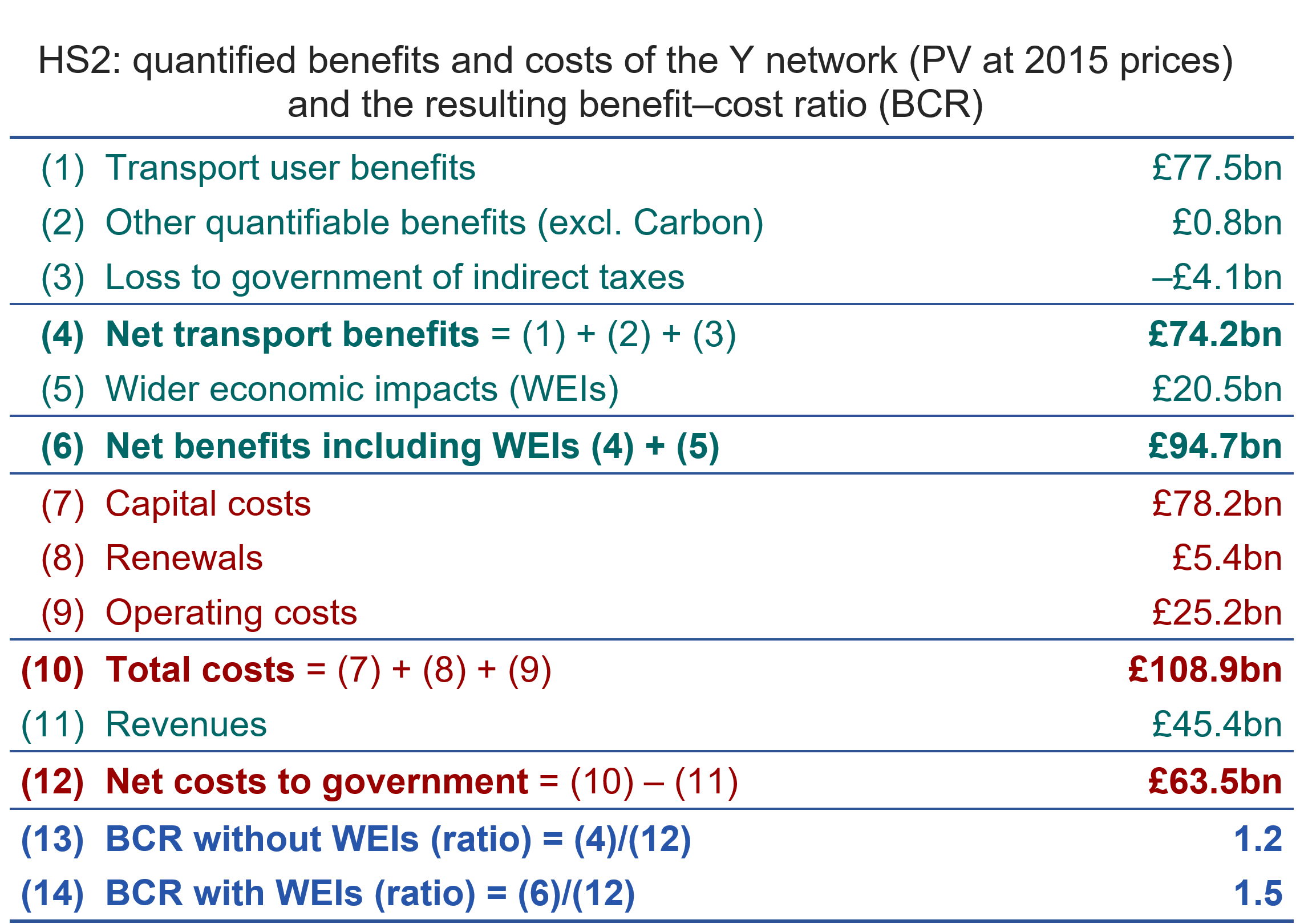
Source: Full Business Case: High Speed Two, Table 2.9, Department for Transport (April 2020)
Box 12.6 in Economics (eleventh edition) and Case study 8.16 on the Essentials of Economics (ninth edition) student website looks at these costs and benefits. The above table is taken from the box/case study. Net transport benefits (present value at 2015 prices) were estimated to be £74.2bn. These include benefits to passengers from shorter journey times, greater reliability, greater connectivity and less crowding, and reduced congestion on roads. They also include other benefits, such as a reduction in carbon emissions and a reduction in road accidents. Net benefits also include the wider benefits from greater connectivity between firms (resulting in increased specialism, trade and investment), greater competition and greater labour mobility. These wider benefits were estimated to be £20.5bn, giving total net benefits of £94.7bn.
Total costs to the government were estimated to be £108.9bn and revenues from fares to be £45.4bn, giving total net costs of £63.5bn. This gave a benefit/cost ratio of 1.5 (£94.7bn/£63.5bn). In the light of these findings, the government announced in September 2020 that the main work on the London to Birmingham leg would begin, despite the Public Accounts Committee’s finding that the project was badly off course and lacking in transparency.

Concern was expressed over whether the Leeds leg would go ahead, but in May 2021, the transport secretary, Grant Shapps, confirmed that it would be completed. However, with the publication of the Integrated Rail Plan in November 2021 (for a link, see list of reports below), the government decided that the eastern leg of HS2 would no longer reach Leeds but instead end in the East Midlands. Then in June 2022, the link between the HS2 line near Manchester and the West Coast Main Line was scrapped. This would have allowed HS2 trains to reach Scotland.
In early 2023, it was announced that the building of the terminus at Euston was being put on hold. Many interpreted this as meaning that it was being scrapped, with trains terminating at Old Oak Common, some six miles from Central London.
Finally, as we have seen, HS2 north of Birmingham has now been scrapped and the government is seeking private-sector funding to build the terminus at Euston and complete the line from Old Oak Common.
Arguments for scrapping the northern legs
The main argument given by the government was that projected costs have risen substantially above original estimates and that by cancelling the Manchester and east Midlands legs, the money saved could be better used elsewhere. The argument is one of opportunity cost. The cost of going ahead would mean not going ahead with better-value alternatives.
The government claims that £36bn will be saved and that this will be diverted to rail, road and other transport projects, primarily (although not exclusively) in the north of England. The money would be spent between 2029 and 2040. Projects include spending additional money on the planned upgrading of the rail link between Manchester and Liverpool, Sheffield, Leeds and Hull; building a new station at Bradford; developing a mass transit system for Leeds and its surroundings; a £2.5bn fund for improved transport for smaller cities, towns and the countryside in the north of England; extra funding for transport in the east and west Midlands, including funding a Midlands Rail Hub. Out of the £36bn, £6.5bn would be for projects elsewhere, including road improvement.
 In order to judge whether the diversion of funds represents a better use of money, a full analysis of costs and benefits of the various projects would need to be conducted and compared with an updated cost–benefit analysis of continuing with the legs to Manchester and the east Midlands and possibly reinstating the Leeds leg too.
In order to judge whether the diversion of funds represents a better use of money, a full analysis of costs and benefits of the various projects would need to be conducted and compared with an updated cost–benefit analysis of continuing with the legs to Manchester and the east Midlands and possibly reinstating the Leeds leg too.
One possible benefit for the government is a political one. It hopes that promising more local projects rather than HS2 will appeal to the electorate in large parts of the north of England who are suffering from poor and unreliable transport links. However, most of these projects will be started well beyond the next election and this political gain may turn out to be small. Indeed, cancelling HS2 may breed cynicism, with people wondering whether any promised new projects will actually be delivered.
Arguments against scrapping the northern leg(s)
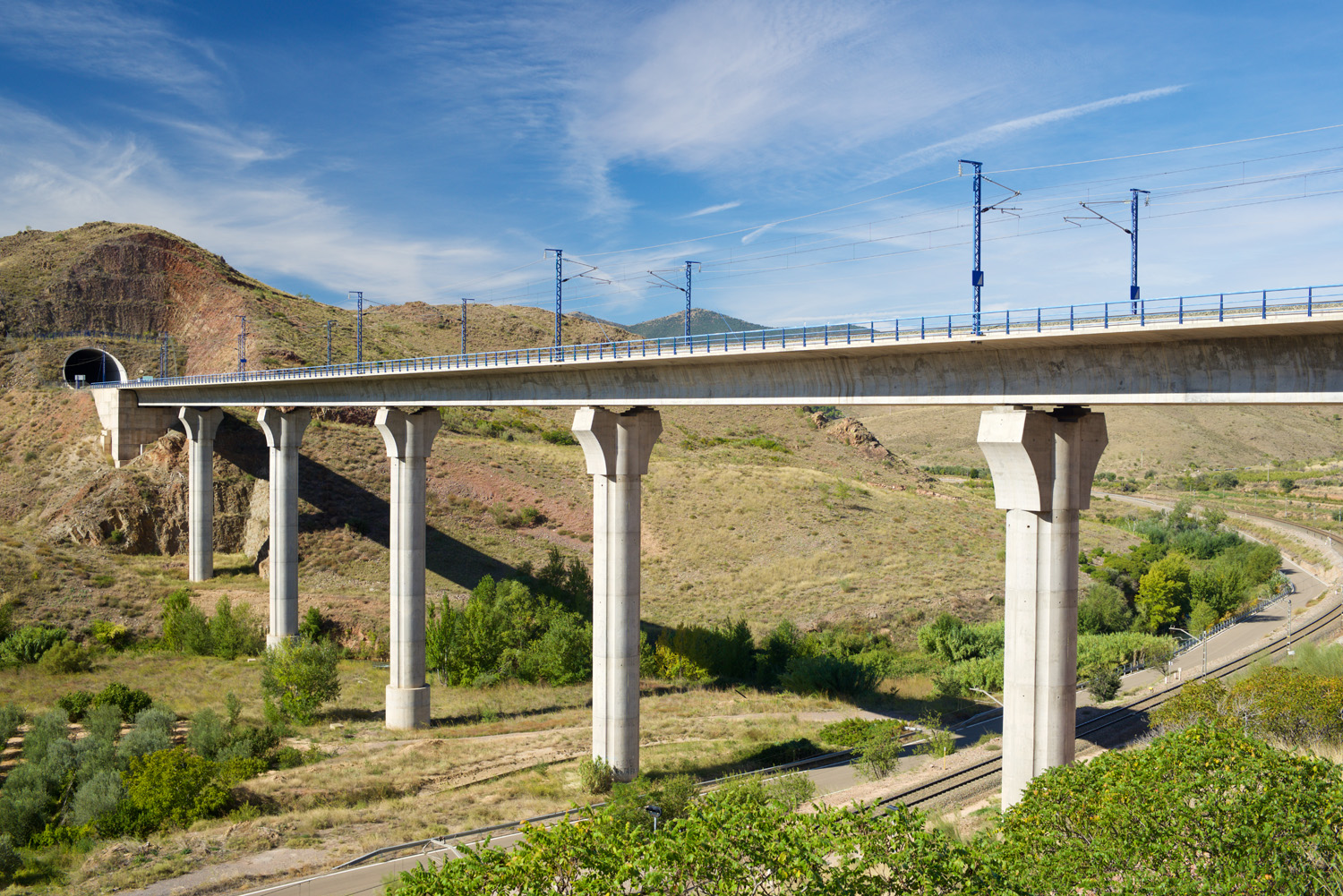 The benefits originally identified from HS2 will now be lost. It is not just that the northern legs of HS2 would have provided faster travel to Manchester and Leeds, but the new lines would have reduced congestion for slower trains and freight on existing lines. This has been the experience in countries such as Japan and Spain, which have invested heavily in new, separate high-speed lines.
The benefits originally identified from HS2 will now be lost. It is not just that the northern legs of HS2 would have provided faster travel to Manchester and Leeds, but the new lines would have reduced congestion for slower trains and freight on existing lines. This has been the experience in countries such as Japan and Spain, which have invested heavily in new, separate high-speed lines.
When the line is completed to Birmingham, the HS2 trains will be able to continue north of Birmingham on existing lines. But these lines are heavily congested, which will limit the number of HS2 trains that can use them. Also they will be restricted to 110 mph on these lines as they have no tilting mechanism. Also they will have a maximum capacity of only 550 seats (a single train set) as the platforms at Manchester Piccadilly cannot accommodate double-set trains. The existing Pendalino trains on the West Coast mainline can travel at 125 mph as they do have the tilting mechanism and they have a higher capacity of 607 seats.
Then there are the signals that cancellation sends to industry about whether governments can be trusted to follow through on public-sector projects. Many business had expanded or relocated to places near the HS2 routes. Many others will wonder whether the promised new projects will go ahead. Indeed, shortly after giving a list of the projects (some of which had already been built or were being built), the list was removed from the government website. There is already a mood of scepticism amongst the electorate. Polling following the initial announcement showed that a majority believed that it was unlikely that the Conservatives would deliver the other projects if they won the next election.
The opportunity cost argument that the money would be better spent on alternative transport projects is predicated on various assumptions. One is that the money will actually be spent, which, as we have seen, people consider doubtful. Another is that the only choice is either spending a fixed pot of money on the northern leg(s) of HS2 or spending it on the alternative projects announced by the prime minister. It could be argued that the government should proceed with both the full HS2 and these other projects, and fund it by extra taxation. Investment as a percentage of GDP is low in the UK compared with other countries. Over the past 10 years, it has averaged 17.8% in the UK. This compares with 21.0% in the USA, 21.5% in Germany, 23.7% in France and 25.4% in Japan. Also, public-sector investment is low in the UK compared with that in other countries.
Assessing the arguments
Many of the costs and benefits of long-term projects, such as HS2, occur many years hence. There is, therefore, a great deal of uncertainty over their magnitude. This makes it extremely difficult to reach a clear conclusion over the desirability of cancelling HS2 north of Birmingham or continuing with it. Under such circumstances, politics tends to dominate decision making.
Articles
- Rishi Sunak promises more rail, road and bus links
BBC News (4/10/23)
- The HS2 rail line: what has been cut and what will replace it?
Financial Times Gill Plimmer, Phillip Georgiadis, Jennifer Williams and Jim Pickard (4/10/24)
 HS2 explained: What is the route now, what are the costs and why is the Manchester leg being axed?
HS2 explained: What is the route now, what are the costs and why is the Manchester leg being axed?Sky News, Sarah Taaffe-Maguire (5/10/23)
- Rishi Sunak finally axes HS2 in the north – weeks after The Independent revealed plan
Independent, Jon Stone and Adam Forrest (4/10/23)
- HS2 | Timeline of a mistreated megaproject
New Civil Engineer, Rob Hakimian (4/10/23)
- HS2 scale-back creates ‘chilling effect’
Construction News, Catherine Moore (5/10/23)
- How HS2 caused the UK to lose focus on ‘levelling up’ during years of high-speed rail delays
The Conversation, Steven McCabe (28/9/23)
- What Rishi Sunak scrapping HS2 – and promising a new ‘Network North’– means for the north of England
The Conversation Tom Arnold (4/10/23)
- HS2: Why Rishi Sunak’s big gamble may not pay off
BBC News, Faisal Islam (5/10/23)
- ‘Managed decline’: the uncertain future for British rail after cuts to HS2
Financial Times, Philip Georgiadis, Gill Plimmer and Jim Pickard (6/10/23)
 Investment outside London could bring £100bn boost to economy, says Bank of England’s former chief economist
Investment outside London could bring £100bn boost to economy, says Bank of England’s former chief economistChannel 4 News, Helia Ebrahimi interviews Andy Haldane (27/9/23)
- HS2 surgery is the wrong choice say leading academics
RailTech, Simon Walton (3/10/23)
- Why has HS2 ended up being so expensive?
The Guardian, Gwyn Topham (25/9/23)
- Ten problems with Rishi Sunak’s Network North announcement
The Guardian, Helen Pidd (5/10/23)
- International investors are laughing at the HS2 shambles
The Guardian, Nils Pratley (4/10/23)
- Spain’s high-speed trains aren’t just efficient, they have transformed people’s lives
The Guardian, María Ramírez (11/10/23)
Government Press Release
Reports
Questions
- Why have the costs of HS2 (in real terms) risen substantially since the first estimates in 2012?
- Identify the types of environmental costs and benefits of the full Y-shaped HS2 project. Why might such costs and benefits be difficult to measure?
- Is the opportunity of cost of proceeding with the full Y-shaped HS2 a range of other transport projects? Explain.
- Find out the level of public-sector investment expenditure as a percentage of (a) total government expenditure and (b) GDP in some other developed countries and compare them with the UK. Comment on your findings.
- Should the decision whether or not to go ahead with the Manchester and east Midlands legs have been delayed until a new updated cost–benefit analysis had been conducted?
- If most of the benefits from the originally planned HS2 will be now be lost with the line ending at Birmingham, should this leg to Birmingham also be cancelled, even though many of the costs have already been incurred? Explain your reasoning.
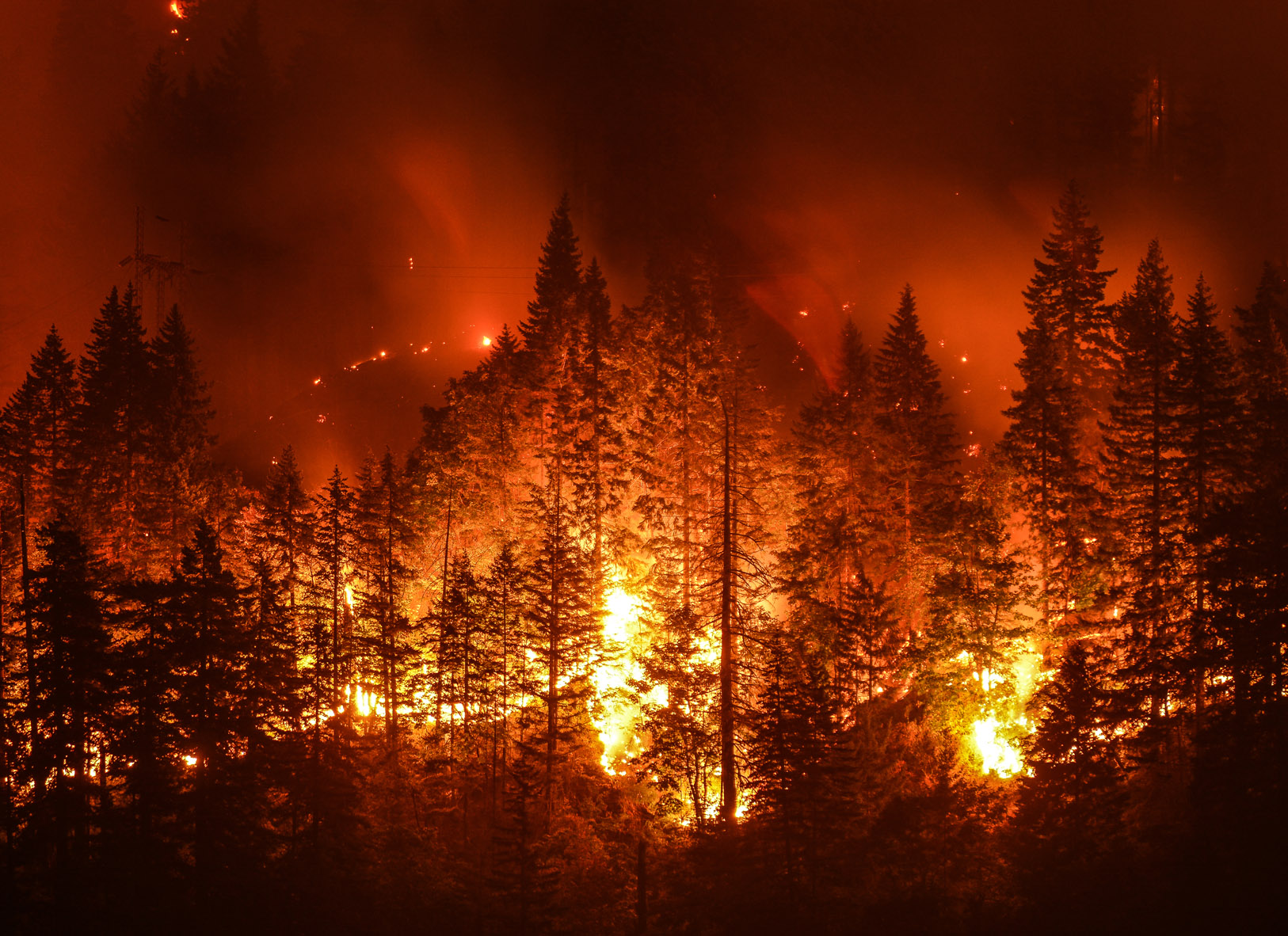 The global average temperature for July 2023 was the highest ever recorded and July 3rd was the world’s hottest day on record. We’ve seen scenes of wildfires raging across much of southern Europe, people suffering searing temperatures in south-west USA, southern India and western China, flash floods in South Korea, Japan and eastern USA. These are all directly related to global warming, which is causing weather systems to become more extreme. And as the planet continues to warm, so these problems will intensify.
The global average temperature for July 2023 was the highest ever recorded and July 3rd was the world’s hottest day on record. We’ve seen scenes of wildfires raging across much of southern Europe, people suffering searing temperatures in south-west USA, southern India and western China, flash floods in South Korea, Japan and eastern USA. These are all directly related to global warming, which is causing weather systems to become more extreme. And as the planet continues to warm, so these problems will intensify.
The Secretary General of the United Nations, Antonio Guterres, in a press conference on 27 July warned that:
Climate change is here. It is terrifying. And it is just the beginning. The era of global warming has ended; the era of global boiling has arrived. The air is unbreathable. The heat is unbearable. And the level of fossil-fuel profits and climate inaction is unacceptable. Leaders must lead. No more hesitancy. No more excuses. No more waiting for others to move first. There is simply no more time for that.
The environmental, human, social and economic impact of global warming is huge, but concentrated on just part of the world’s population. For many, a more variable climate is at worst an inconvenience – at least in the short term. But it is the short term that politicians are most concerned about when seeking to win the next election.
 Tackling climate change requires action to reduce carbon emissions now, even though the effects take many years. But one person’s emissions make only a minuscule contribution to global warming. So why not be selfish and carry on driving, flying off on holiday, using a gas boiler and eating large amounts of red meat? This is what many people want to do and governments know it. Many people do not like green policies as they involve sacrifice. Examples include higher fuel prices and restrictions on what you can do. So, despite the visions of fires, floods and destruction, governments are wary about raising fuel taxes, airport duties and charges to use old high-emission cars in cities; wary about raising taxes generally to provide subsidies for sustainable power generation; wary about banning new oil and gas fields that would reduce reliance on imported fuel.
Tackling climate change requires action to reduce carbon emissions now, even though the effects take many years. But one person’s emissions make only a minuscule contribution to global warming. So why not be selfish and carry on driving, flying off on holiday, using a gas boiler and eating large amounts of red meat? This is what many people want to do and governments know it. Many people do not like green policies as they involve sacrifice. Examples include higher fuel prices and restrictions on what you can do. So, despite the visions of fires, floods and destruction, governments are wary about raising fuel taxes, airport duties and charges to use old high-emission cars in cities; wary about raising taxes generally to provide subsidies for sustainable power generation; wary about banning new oil and gas fields that would reduce reliance on imported fuel.
Because the external costs of carbon emissions are so high and global, government action is required to change behaviour. Education can help and scenes of devastation from around the world may change the hearts and minds or some people. Also, the prospect of profits from cleaner and more fuel-efficient technology can help to spur innovation and investment. But to meet net zero targets still requires policies that are unpopular with many people who might be inconvenienced or have to pay higher petrol, energy and food prices, especially at a time when budgets are being squeezed by inflation.
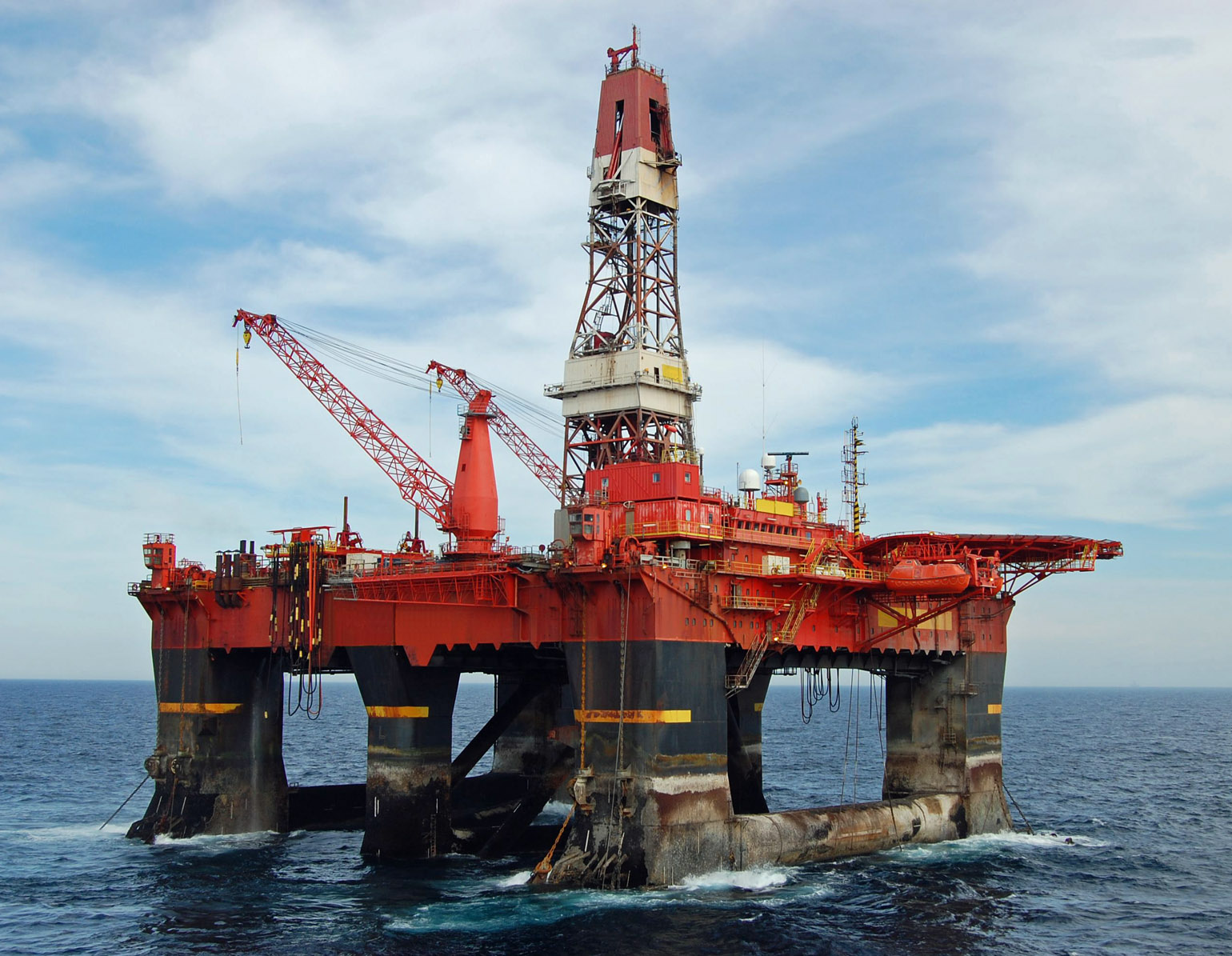 Part of the problem is a distributional one. The people most affected by the cost-of-living crisis and higher interest rates are those on lower incomes and with higher debts. Politicians know that it will be hard to win the votes of such people if they are faced with higher green taxes. As elections approach, politicians are likely to backtrack on many environmental commitments to appeal to such people.
Part of the problem is a distributional one. The people most affected by the cost-of-living crisis and higher interest rates are those on lower incomes and with higher debts. Politicians know that it will be hard to win the votes of such people if they are faced with higher green taxes. As elections approach, politicians are likely to backtrack on many environmental commitments to appeal to such people.
This is beginning to happen in the UK, with the government declaring that it is on the side of the motorist. Indeed, Rishi Sunak has just announced that the government will authorise more than 100 new licenses for new oil and gas wells in the North Sea. This is despite the United Nations, various other international bodies, climate scientists and charities calling for a halt to all licensing and funding of new oil and gas development from new and existing fields. The government argues that increased North Sea production would reduce the reliance on imported oil.
Video
Articles
- July 2023 the Hottest Ever Month on Record, Likely Warmest in ‘Tens of Thousands of Years’
The Wire, Aathira Perinchery (28/7/23)
- Climate threat ‘existential’ says Biden, as world faces hottest July
BBC News, Heather Sharp and Emma Owen (27/7/23)
- UN chief says Earth in ‘era of global boiling’, calls for radical action
Aljazeera (27/7/23)
- Why it’s time to prepare for the worst on climate change
Financial Times, Robert Pindyck (6/7/23)
- The planet heats, the world economy cools – the real global recession is ecological
The Guardian, Larry Elliott (9/7/23)
- Climate change will reshape global supply chains — it can reduce welfare on Earth by 20%: Ivan Rudick
The Economic Times (India), Srijana Mitra Das (30/6/23)
- Rishi Sunak defends granting new North Sea oil and gas licences
BBC News (31/7/23)
- The oil industry has succumbed to a dangerous new climate denialism
The Conversation, Adi Imsirovic (31/7/23)
- Dismay as Rishi Sunak vows to ‘max out’ UK fossil fuel reserves
The Guardian, Severin Carrell, Peter Walker and Helena Horton (31/7/23)
- What are the Conservatives’ green policies – and what could be scrapped
Sky News, Jennifer Scott (31/7/23)
- Rishi Sunak signals he is ready to soften UK green policies
Financial Times, George Parker and Lucy Fisher (24/7/23)
- Green campaigners fear UK policy backlash after ULEZ keeps Uxbridge Tory
Politico, Charlie Cooper and Bethany Dawson (23/7/23)
- Climate policy and economic inequality
VoxEU, Diego Känzig (25/6/23)
- The untapped potential of education in the battle against climate change
VoxEU, Noam Angrist, Kevin Winseck, Harry Anthony Patrinos and Joshua Graff Zivin (14/7/23)
Questions
- In what sense is the environment a ‘public good’? How is the concept of externalities relevant in analysing the private decisions made about the use of a public good?
- How may game theory be used to help understand the difficulties in reaching international agreement about climate change policies?
- What is meant by ‘net zero’? Is carbon capture and storage an acceptable alternative to cutting carbon emissions?
- In what ways could policies to tackle climate change be designed to reduce income inequality rather than increase it?
- What are the arguments for and against banning (a) petrol and diesel cars; (b) gas boilers; (c) fossil-fuel power stations? How much notice should be given if such bans are to be introduced?
- What is meant by ‘nudge theory’? In what ways could people be nudged into making greener decisions?
- What are the arguments for and against granting new licences for North Sea oil and gas drilling? Explain where you feel the balance of the arguments lies.
 The United Nations International Panel on Climate Change (IPCC) has just published its most comprehensive report so far. It finds that ‘human activities, principally through emissions of greenhouse gases, have unequivocally caused global warming’. This has led to widespread and rapid changes in climate and biodiversity and to more extreme weather patterns, such as droughts, floods and hurricanes. What is more, the distribution of these effects is uneven, with communities who have contributed the least to current climate change being disproportionately affected.
The United Nations International Panel on Climate Change (IPCC) has just published its most comprehensive report so far. It finds that ‘human activities, principally through emissions of greenhouse gases, have unequivocally caused global warming’. This has led to widespread and rapid changes in climate and biodiversity and to more extreme weather patterns, such as droughts, floods and hurricanes. What is more, the distribution of these effects is uneven, with communities who have contributed the least to current climate change being disproportionately affected.
At the 2015 COP21 climate change conference in Paris (see also), it was agreed to adopt policies to limit the increase in global temperatures to ‘well below’ 2°C above pre-industrial levels and to make an effort to limit it to 1.5°C. Global temperatures have already risen 1.1°C above 1850–1900 levels and are set to reach 1.5°C in the early 2030s. Every increment of global warming will intensify ‘multiple and concurrent hazards’.
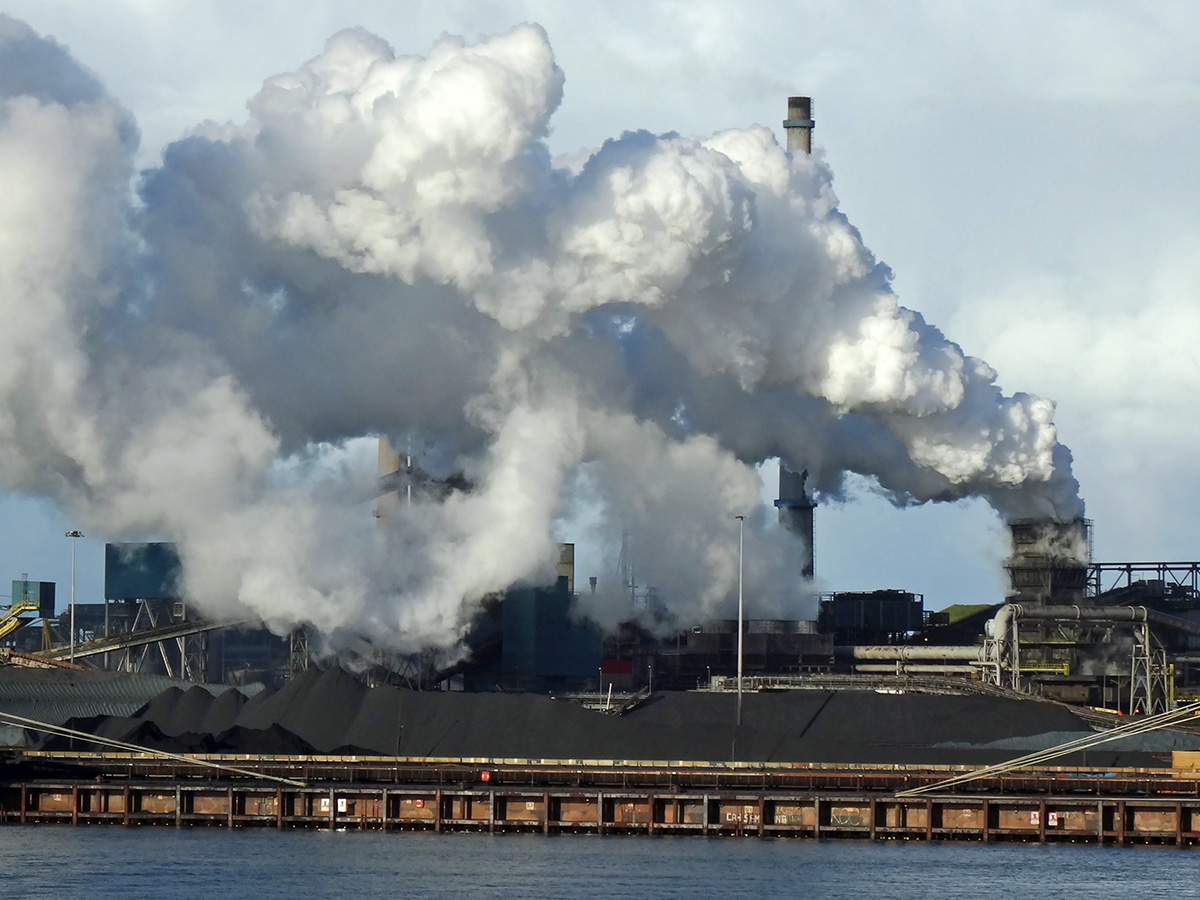 Deep, rapid and sustained reductions in emissions would slow down the rise in global temperatures, but even with such reductions, temperatures will still exceed 1.5°C in the next few years and, even under the best-case scenario, would not fall below 1.5°C again until the end of the 21st century. Under more pessimistic scenarios, global temperatures could rise to 2.7°C above pre-industrial levels by the end of the century under an intermediate greenhouse gas emissions scenario and to 4.4°C under a very high emissions scenario. Anything above 2°C would be likely to have catastrophic effects. The longer countries wait to take action, the greater the rise in global temperatures and hence the greater the damage and the more costly it will be to rectify it.
Deep, rapid and sustained reductions in emissions would slow down the rise in global temperatures, but even with such reductions, temperatures will still exceed 1.5°C in the next few years and, even under the best-case scenario, would not fall below 1.5°C again until the end of the 21st century. Under more pessimistic scenarios, global temperatures could rise to 2.7°C above pre-industrial levels by the end of the century under an intermediate greenhouse gas emissions scenario and to 4.4°C under a very high emissions scenario. Anything above 2°C would be likely to have catastrophic effects. The longer countries wait to take action, the greater the rise in global temperatures and hence the greater the damage and the more costly it will be to rectify it.
‘For any given future warming level… projected long-term impacts are up to multiple times higher than currently observed (high confidence). Risks and projected adverse impacts and related losses and damages from climate change escalate with every increment of global warming (very high confidence). Climatic and non-climatic risks will increasingly interact, creating compound and cascading risks that are more complex and difficult to manage (high confidence).’ (Paragraph B2)
But the report is not all ‘doom and gloom’. It is possible to limit global warming to 1.5°C or only a little over by making rapid, deep and, in most cases, immediate greenhouse gas emissions reductions in all sectors and reaching net zero emissions in the early 2050s. Science and technology have the answers – answers that are now much cheaper and more available than back in 2015 when the 1.5°C target was agreed. But what it does require is doing ‘everything, everywhere, all at once’. And that requires political will and the right economic incentives.
The politics and economics of achieving net zero
In terms of the politics, there is general global agreement by governments about the likely effects of climate change. And most governments agree that action needs to be taken. However, there are three key political problems.
The first is that the costs of action will be borne now, while the benefits of action will accrue over a much longer period of time. This links to the second problem – the mismatch between the lives of governments and the long-term effects of climate change. If governments put off doing anything now and merely promise that something will be done in the future, they will not have to take unpopular actions, such as raising taxes on energy, private transport and certain goods or banning various activities. Future governments will have to sort things out, by when, although the problems will be greater, the existing politicians will no longer be in power.
 The third problem concerns the distribution of the costs and benefits of action. The major emitters of carbon are the rich countries, while the major sufferers are poor people in countries subject to drought, flooding and rising sea levels. Not surprisingly, who should cut down on emissions and pay for the mitigation necessary in many of the poorer countries is a difficult political issue, which is why it’s much easier to say what needs to be achieved overall than precisely what measures should be taken by which countries.
The third problem concerns the distribution of the costs and benefits of action. The major emitters of carbon are the rich countries, while the major sufferers are poor people in countries subject to drought, flooding and rising sea levels. Not surprisingly, who should cut down on emissions and pay for the mitigation necessary in many of the poorer countries is a difficult political issue, which is why it’s much easier to say what needs to be achieved overall than precisely what measures should be taken by which countries.
These problems reflect the fact that many, if not most, of the environmental costs of production and consumption are external costs – costs borne, not by the direct producer or consumer, but by other people at other places and/or in the future.
Nevertheless, the relative costs of moving to greener production and consumption are falling. The costs of renewable energy, including solar power, onshore and offshore wind and hydroelectric power are falling relative to that generated from fossil fuels. At the same time, the take up of electric cars is likely to continue rising as battery technology improves. This does, of course, require an increase in charging infrastructure. Domestic heat pump technology is improving and home insulation methods are becoming more efficient.
Persuading consumers and firms to take account of environmental externalities could in part be achieved by education. It makes it much easier for politicians to take appropriate action now if their populations are on board. There has been increasing awareness over the years of the environmental impact of people’s actions. People have become more willing to take responsibility for the world that future generations will inherit. This is helped both by education in schools and colleges and by frequent items in the media.
But incentives also have a major part to play. To internalise environmental externalities, external costs could be taxed and external benefits subsidised.
The effect of a carbon tax on production
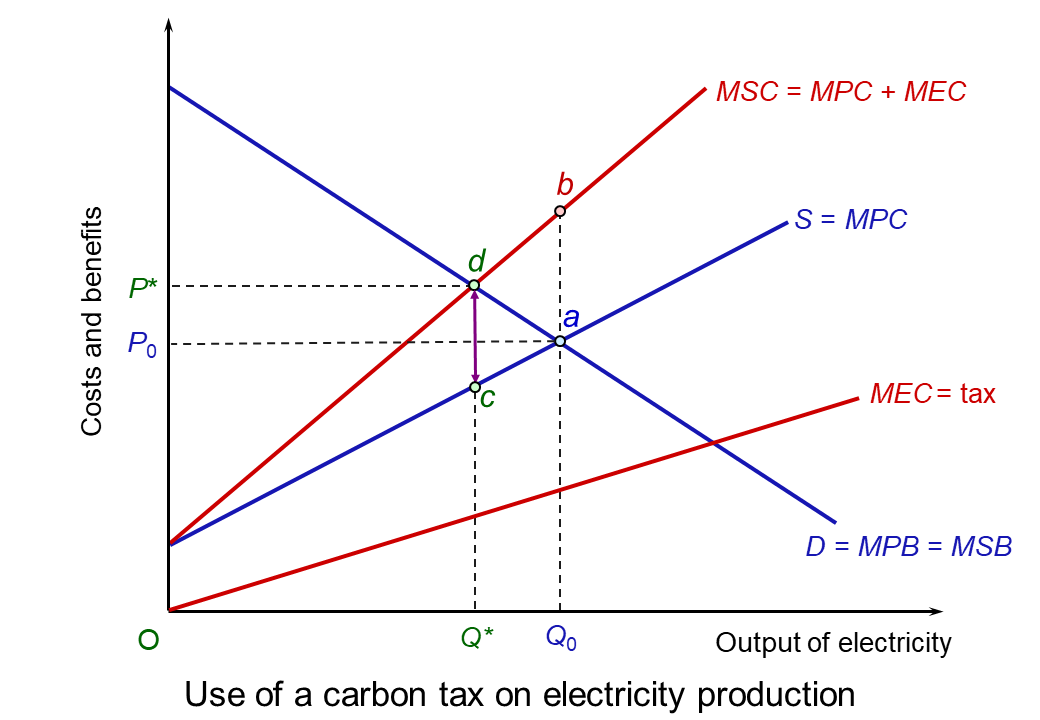 The use of taxes to reduce activities with negative environmental externalities is illustrated in the diagram (click here for a PowerPoint). It takes the case of carbon emissions from coal-fired electricity generation in a large country. To keep the analysis simple, it is assumed that all electricity in the country is generated from coal-fired power stations and that there are many such power stations, making the market perfectly competitive.
The use of taxes to reduce activities with negative environmental externalities is illustrated in the diagram (click here for a PowerPoint). It takes the case of carbon emissions from coal-fired electricity generation in a large country. To keep the analysis simple, it is assumed that all electricity in the country is generated from coal-fired power stations and that there are many such power stations, making the market perfectly competitive.
It is assumed that all the benefits from electricity production accrue solely to the consumers of electricity (i.e. there are no external benefits from consumption). Marginal private and marginal social benefits of the production of electricity are thus the same (MPB = MSB). The curve slopes downwards because, with a downward-sloping demand for electricity, higher output results in a lower marginal benefit (diminishing marginal utility).
Competitive market forces, with producers and consumers responding only to private costs and benefits, will result in a market equilibrium at point a in the diagram: i.e. where demand equals supply. The market equilibrium price is P0 while the market equilibrium quantity is Q0. However the presence of external costs in production means that MSC > MPC. In other words, MEC = b – a.
The socially optimal output would be Q* where P = MSB = MSC, achieved at the socially optimal price of P*. This is illustrated at point d and clearly shows how external costs of production in a perfectly competitive market result in overproduction: i.e. Q0 > Q*. From society’s point of view, too much electricity is being produced and consumed.
If a carbon tax of d – c is imposed on the electricity producers, it will now be in producers’ interests to produce at Q*, where their new private marginal costs (including tax) equals their marginal private benefit.
But this brings us back to the politics of measures to reduce emissions. People do not like paying higher taxes. In his latest Budget, the UK Chancellor, Jeremy Hunt, decided not to raise fuel duties by the 12p that had been previously planned, despite fuel prices having recently fallen. Meanwhile, charging prices for electric cars have risen.
Other economic measures
 A simpler method for dealing with environmental externalities is ban certain activities that omit CO2. For example, in the UK there will be a ban on the sale of new petrol and diesel cars and vans from 2030 (with the exception of some low-emission hybrids until 2035). In the EU there will be a similar ban from 2035. Clearly, such measures are only suitable when there are non-emitting alternatives.
A simpler method for dealing with environmental externalities is ban certain activities that omit CO2. For example, in the UK there will be a ban on the sale of new petrol and diesel cars and vans from 2030 (with the exception of some low-emission hybrids until 2035). In the EU there will be a similar ban from 2035. Clearly, such measures are only suitable when there are non-emitting alternatives.
Another alternative is a cap-and-trade system, such as the European Emissions Trading Scheme. It involves setting quotas for emissions and allowing firms which manage to cut emissions to sell their surplus permits to less efficient firms. This puts a price pressure on firms to be more efficient. But the quotas (the ‘cap’) must be sufficiently tight if emissions are going to be cut to desired levels. Nevertheless, it is an efficient way of cutting emissions as it gives a competitive advantage to low-emission producers.
Conclusion
If the problem of global warming is to be limited to 1.5°C, or only very little above, multiple solutions will need to be found and there must be a combination of political will, economic incentives and the mobilisation of scientific and technical know-how. As the Secretary-General of the United Nations, António Guterres, stated in launching the new report:
This report is a clarion call to massively fast-track climate efforts by every country and every sector and on every timeframe. In short, our world needs climate action on all fronts – everything, everywhere, all at once.
Report
Videos
Articles
- Climate damage is worsening faster than expected, but there’s still reason for optimism – 4 essential reads on the IPCC report
The Conversation, Stacy Morford at al (20/3/23)
- UN climate scientists are running out of ways to warn us
Vox, Rebecca Leber and Umair Irfan (20/3/23)
- Expert reaction to the AR6 synthesis report, as published by the IPCC
Science Media Centre (20/3/23)
- ‘The climate time-bomb is ticking’: The world is running out of time to avoid catastrophe, new UN report warns
CNN, Laura Paddison (20/3/23)
- UN climate report: Scientists release ‘survival guide’ to avert climate disaster
BBC News, Matt McGrath and Georgina Rannard (20/3/23)
- Five things we’ve learned from UN climate report
BBC News, Matt McGrath (20/3/23)
- Climate change: Can we really take CO2 back out the air?
BBC Future, Jocelyn Timperley (21/3/23)
- Scientists deliver ‘final warning’ on climate crisis: act now or it’s too late
The Guardian, Fiona Harvey (20/3/23)
- From climate change ‘certainty’ to rapid decline: a timeline of IPCC reports
The Guardian, Damian Carrington (20/3/23)
- Humanity at the climate crossroads: highway to hell or a livable future?
The Guardian, Damian Carrington (20/3/23)
 IPCC report: Here’s how we can defuse the ‘ticking time bomb’ of climate change
IPCC report: Here’s how we can defuse the ‘ticking time bomb’ of climate changeEuronews, Rosie Frost (21/3/23)
- Now or never: One of the biggest climate reports ever shows time is running out
NBC News, Evan Bush and Denise Chow (20/3/23)
Questions
- Why might countries not do ‘everything, everywhere, all at once’ to avert climate change?
- What might an optimist conclude from the ICC report?
- To what extent is climate change an economic problem?
- On a diagram similar to the one above, show how a subsidy could be used to internalise positive externalities.
- How might countries reduce the consumption of fossil fuels in the most efficient way? Are they likely to want to do this? Explain.
- Is a ‘cap-and-trade’ (tradable permits) system (a) an effective means of reducing emissions; (b) an efficient system?
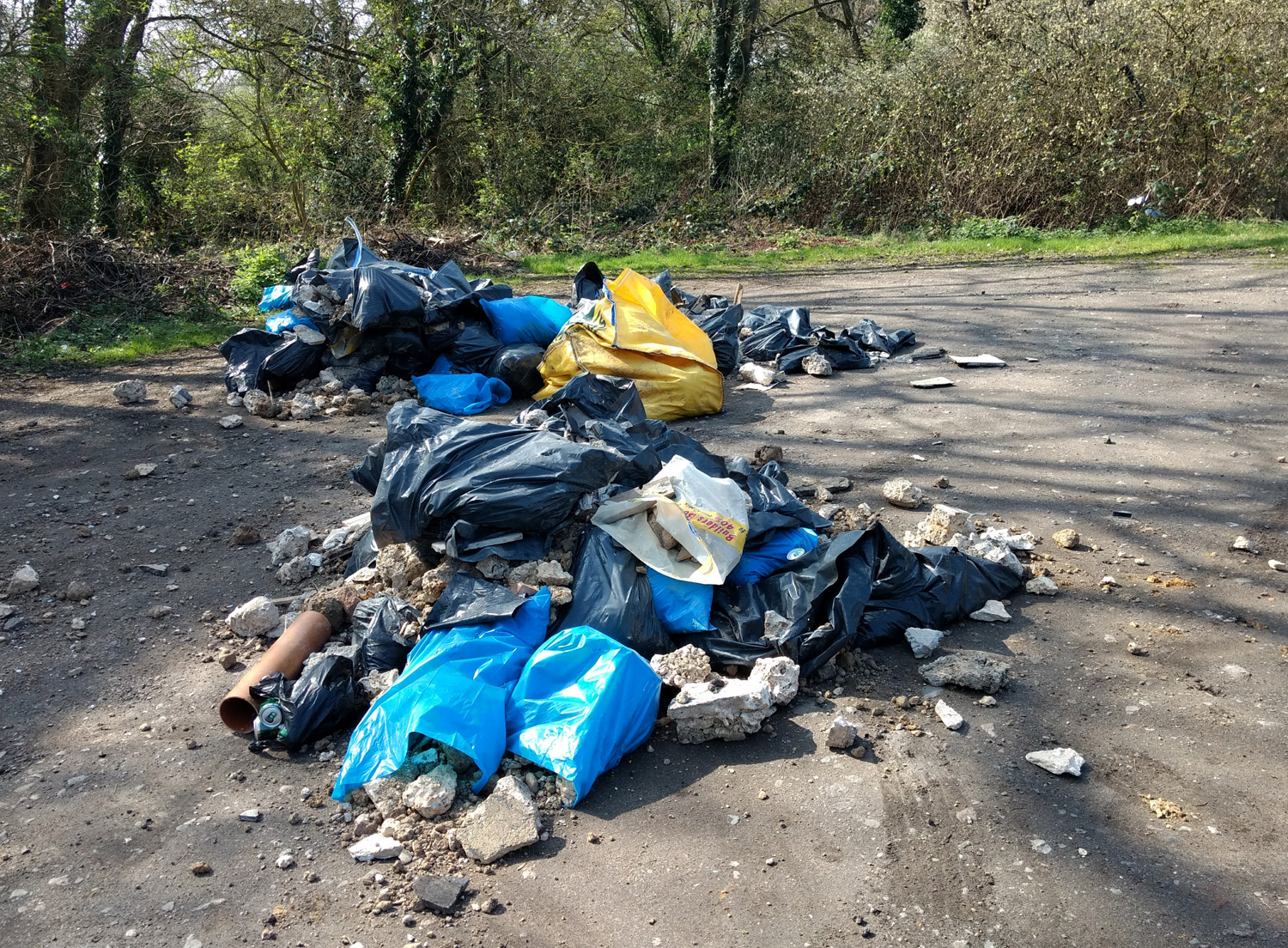 If it costs to dispose of waste, there is the danger that people may resort to fly-tipping – the illegal dumping of waste in the countryside or on the streets. But several local authorities have indeed been charging for the disposal of building/DIY waste, with the inevitable consequences of huge quantities of dumped rubbish.
If it costs to dispose of waste, there is the danger that people may resort to fly-tipping – the illegal dumping of waste in the countryside or on the streets. But several local authorities have indeed been charging for the disposal of building/DIY waste, with the inevitable consequences of huge quantities of dumped rubbish.
Apart from being an eyesore and damaging the environment, fly-tipped waste can be a health hazard, often containing toxic materials, such as asbestos and chemicals. According to the UK government, in 2020/21 there were over 60 000 incidents of fly-tipping of construction, demolition and excavation material, costing an estimated £392 million. In addition, people leave black bags of household waste and single items, such as mattresses, on the roadside.
The external costs are considerably greater than the benefits to those doing the dumping, but because the costs are largely external, people are encouraged to fly-tip, especially if they think that they are unlikely to be caught. Many householders are happy to pay low rates to have their DIY waste disposed of and ‘ask no questions’ about what will happen to it.
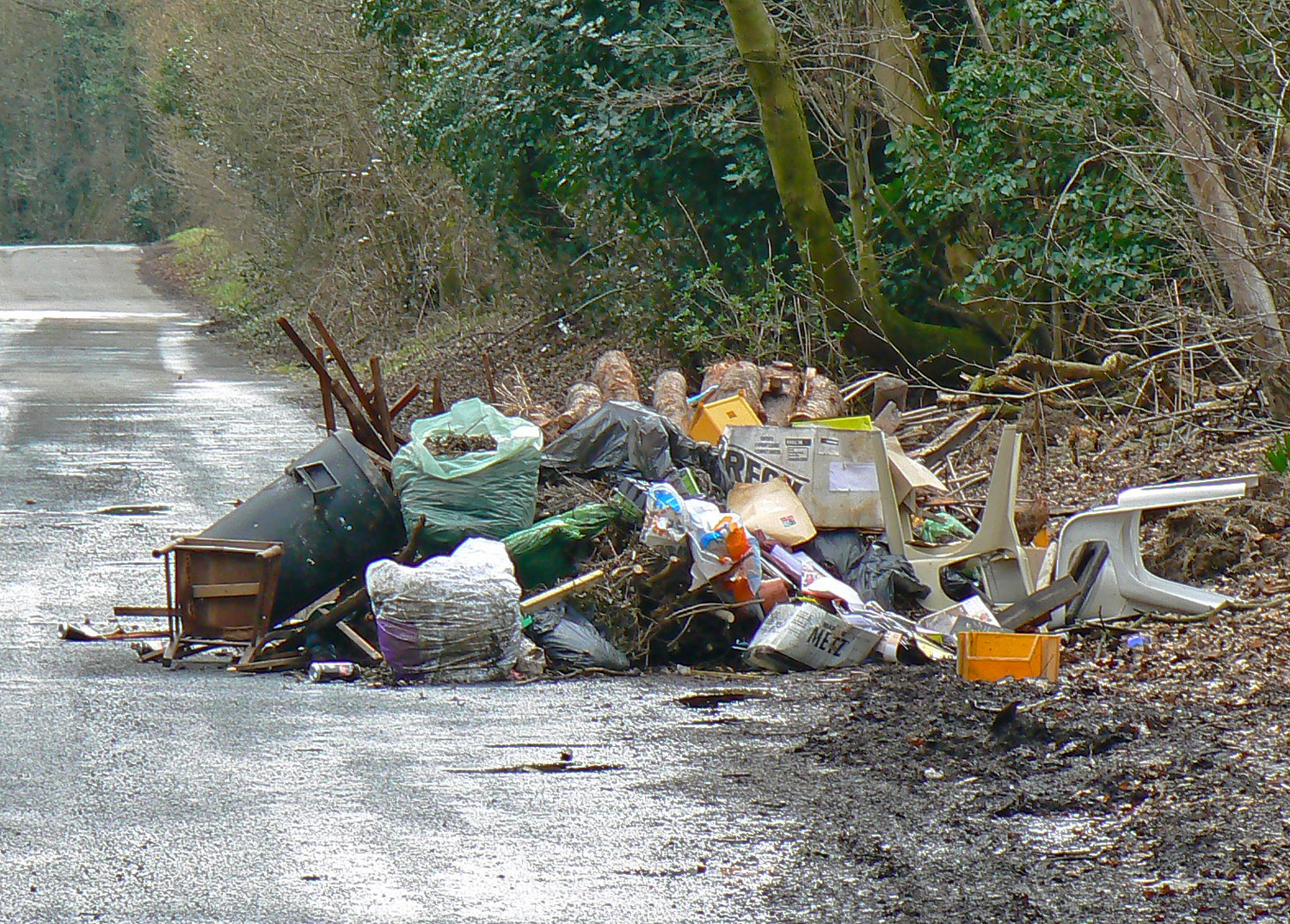 It is clearly socially efficient to stop fly-tipping. One solution is to enforce the law more rigorously and to introduce stiffer penalties. Increasingly, local authorities and private landowners are installing CCTV cameras to identify people doing the tipping. To be effective, the cameras must be out of reach. Also, the police must then follow up any cases and arrest and charge the culprits.
It is clearly socially efficient to stop fly-tipping. One solution is to enforce the law more rigorously and to introduce stiffer penalties. Increasingly, local authorities and private landowners are installing CCTV cameras to identify people doing the tipping. To be effective, the cameras must be out of reach. Also, the police must then follow up any cases and arrest and charge the culprits.
An alternative is to provide free disposal at council tips. The UK government has launched a consultation on a proposal to prevent local authorities from charging for the disposal of DIY waste. This still involves an externality in that the costs of disposal are not being borne by the person creating the waste, but clearly the size of the negative externality is considerably less than if the waste had been fly-tipped.
Selected local authorities can apply for new grants totalling £450 000 to help fund the provision of free DIY waste disposal and to install systems, such as CCTV and automatic number-plate recognition, to catch fly-tippers in action.
Devising policies to reduce externalities often involves understanding the incentive mechanisms which encourage people to engage in such activities in the first place and then making it in people’s interests not to engage in them in the future.
Videos
Articles
Government publications
Questions
- Draw a diagram to illustrate how the consumption of products with large negative externalities is considerably above the socially efficient level.
- Compare the relative advantages and disadvantages of the various policy alternatives to tackle fly-tipping that are discussed in the articles.
- Are there any ‘nudges’ that could be used to prevent fly-tipping?

 According to the report, five tipping points are imminent with the current degree of global warming (1.2oC). These are:
According to the report, five tipping points are imminent with the current degree of global warming (1.2oC). These are:
 The environment as a common resource. The air, the seas and many other parts of the environment are not privately owned. They are a global ‘commons’. As such, it is extremely difficult to exclude non-payers from consuming the benefits they provide. Because of this property of ‘non-excludability’, it is often possible to consume the benefits of the environment at a zero price. If the price of any good or service to the user is zero, there is no incentive to economise on its use. In the case of the atmosphere as a ‘dump’ for greenhouse gases, this results in its overuse. Many parts of the environment, however, including the atmosphere, are scarce: there is rivalry in their use. As people increase their use of the atmosphere as a dump for carbon, so the resulting global warming adversely affects the lives of others. This is an example of the tragedy of the commons – where a free resource (such as common land) is overused.
The environment as a common resource. The air, the seas and many other parts of the environment are not privately owned. They are a global ‘commons’. As such, it is extremely difficult to exclude non-payers from consuming the benefits they provide. Because of this property of ‘non-excludability’, it is often possible to consume the benefits of the environment at a zero price. If the price of any good or service to the user is zero, there is no incentive to economise on its use. In the case of the atmosphere as a ‘dump’ for greenhouse gases, this results in its overuse. Many parts of the environment, however, including the atmosphere, are scarce: there is rivalry in their use. As people increase their use of the atmosphere as a dump for carbon, so the resulting global warming adversely affects the lives of others. This is an example of the tragedy of the commons – where a free resource (such as common land) is overused. Even if governments want the world to reduce carbon emissions, they would rather that the cost of doing so is born less by their own country and more by other countries. This creates a prisoner’s dilemma, where the optimum may be for a large global reduction in carbon emissions, but the optimum is not achieved because countries individually are only prepared to reduce a little, expecting other countries to reduce more. Getting a deal that is deemed ‘fair’ by all countries is very difficult. An example is where developing countries, may feel that it is fair that the bulk of any cuts, if not all of them, should be made by developed countries, while developed countries feel that fixed percentage cuts should be made by all countries.
Even if governments want the world to reduce carbon emissions, they would rather that the cost of doing so is born less by their own country and more by other countries. This creates a prisoner’s dilemma, where the optimum may be for a large global reduction in carbon emissions, but the optimum is not achieved because countries individually are only prepared to reduce a little, expecting other countries to reduce more. Getting a deal that is deemed ‘fair’ by all countries is very difficult. An example is where developing countries, may feel that it is fair that the bulk of any cuts, if not all of them, should be made by developed countries, while developed countries feel that fixed percentage cuts should be made by all countries. In terms of reducing carbon emissions, the key is reducing the consumption of carbon-producing activities and products that involve emissions in their production. This can be achieved through taxes on such products and/or subsidies on green alternatives (see the blog ‘Are carbon taxes a solution to the climate emergency?‘). Alternatively carbon-intensive consumption can be banned or phased out by law. For example, the purchase of new petrol or diesel cars cold be banned beyond a certain date. Or some combination of taxation and regulation can be used, such as in a cap-and-trade system – for example, the EU Emissions Trading System (EU ETS) (see the blog ‘Carbon pricing in the UK‘). Then there is government investment in zero carbon technologies and infrastructure (e.g. electrifying railways). In practice, a range of policy instruments are needed (see the blog ‘Tackling climate change: “Everything, everywhere, all at once”‘).
In terms of reducing carbon emissions, the key is reducing the consumption of carbon-producing activities and products that involve emissions in their production. This can be achieved through taxes on such products and/or subsidies on green alternatives (see the blog ‘Are carbon taxes a solution to the climate emergency?‘). Alternatively carbon-intensive consumption can be banned or phased out by law. For example, the purchase of new petrol or diesel cars cold be banned beyond a certain date. Or some combination of taxation and regulation can be used, such as in a cap-and-trade system – for example, the EU Emissions Trading System (EU ETS) (see the blog ‘Carbon pricing in the UK‘). Then there is government investment in zero carbon technologies and infrastructure (e.g. electrifying railways). In practice, a range of policy instruments are needed (see the blog ‘Tackling climate change: “Everything, everywhere, all at once”‘). Despite the unwillingness of many countries, especially the oil and coal producing countries, to phase out fossil fuels, there are reasons for hope that global warming may be halted and eventually even reversed. Damage will have been done and some tipping points may have been reached, but further tipping points may be averted.
Despite the unwillingness of many countries, especially the oil and coal producing countries, to phase out fossil fuels, there are reasons for hope that global warming may be halted and eventually even reversed. Damage will have been done and some tipping points may have been reached, but further tipping points may be averted. COP28: Bill Gates on climate optimism, wealth and the human condition
COP28: Bill Gates on climate optimism, wealth and the human condition HS2 has been cancelled north of Birmingham. The prime minister, Rishi Sunak, announced this at the Conservative Party conference on 4 October, some 13 years after the plan was adopted by the Labour government to build a new high-speed railway from London to Birmingham, which then would branch into two legs – one to Manchester and one to Leeds. The initial budget for this was £15.8bn to £17.4bn. When it came to power, the Conservative-Liberal coalition government ordered a review of the plan. In light of this, the government
HS2 has been cancelled north of Birmingham. The prime minister, Rishi Sunak, announced this at the Conservative Party conference on 4 October, some 13 years after the plan was adopted by the Labour government to build a new high-speed railway from London to Birmingham, which then would branch into two legs – one to Manchester and one to Leeds. The initial budget for this was £15.8bn to £17.4bn. When it came to power, the Conservative-Liberal coalition government ordered a review of the plan. In light of this, the government  The project was divided into two phases: Phase 1 to Birmingham and Phase 2 to Manchester and Leeds. The Phase 1 parliamentary bill became law in February 2017 and soon after that, various construction contracts were signed. After some delays, preparation for construction work began in June 2019. There was growing doubt, however, about the viability of the northern legs.
The project was divided into two phases: Phase 1 to Birmingham and Phase 2 to Manchester and Leeds. The Phase 1 parliamentary bill became law in February 2017 and soon after that, various construction contracts were signed. After some delays, preparation for construction work began in June 2019. There was growing doubt, however, about the viability of the northern legs.

 In order to judge whether the diversion of funds represents a better use of money, a full analysis of costs and benefits of the various projects would need to be conducted and compared with an updated cost–benefit analysis of continuing with the legs to Manchester and the east Midlands and possibly reinstating the Leeds leg too.
In order to judge whether the diversion of funds represents a better use of money, a full analysis of costs and benefits of the various projects would need to be conducted and compared with an updated cost–benefit analysis of continuing with the legs to Manchester and the east Midlands and possibly reinstating the Leeds leg too. The benefits originally identified from HS2 will now be lost. It is not just that the northern legs of HS2 would have provided faster travel to Manchester and Leeds, but the new lines would have reduced congestion for slower trains and freight on existing lines. This has been the experience in countries such as Japan and Spain, which have invested heavily in new, separate high-speed lines.
The benefits originally identified from HS2 will now be lost. It is not just that the northern legs of HS2 would have provided faster travel to Manchester and Leeds, but the new lines would have reduced congestion for slower trains and freight on existing lines. This has been the experience in countries such as Japan and Spain, which have invested heavily in new, separate high-speed lines. The global average temperature for July 2023 was the highest ever recorded and July 3rd was the world’s hottest day on record. We’ve seen scenes of wildfires raging across much of southern Europe, people suffering searing temperatures in south-west USA, southern India and western China, flash floods in South Korea, Japan and eastern USA. These are all directly related to global warming, which is causing weather systems to become more extreme. And as the planet continues to warm, so these problems will intensify.
The global average temperature for July 2023 was the highest ever recorded and July 3rd was the world’s hottest day on record. We’ve seen scenes of wildfires raging across much of southern Europe, people suffering searing temperatures in south-west USA, southern India and western China, flash floods in South Korea, Japan and eastern USA. These are all directly related to global warming, which is causing weather systems to become more extreme. And as the planet continues to warm, so these problems will intensify. Tackling climate change requires action to reduce carbon emissions now, even though the effects take many years. But one person’s emissions make only a minuscule contribution to global warming. So why not be selfish and carry on driving, flying off on holiday, using a gas boiler and eating large amounts of red meat? This is what many people want to do and governments know it. Many people do not like green policies as they involve sacrifice. Examples include higher fuel prices and restrictions on what you can do. So, despite the visions of fires, floods and destruction, governments are wary about raising fuel taxes, airport duties and charges to use old high-emission cars in cities; wary about raising taxes generally to provide subsidies for sustainable power generation; wary about banning new oil and gas fields that would reduce reliance on imported fuel.
Tackling climate change requires action to reduce carbon emissions now, even though the effects take many years. But one person’s emissions make only a minuscule contribution to global warming. So why not be selfish and carry on driving, flying off on holiday, using a gas boiler and eating large amounts of red meat? This is what many people want to do and governments know it. Many people do not like green policies as they involve sacrifice. Examples include higher fuel prices and restrictions on what you can do. So, despite the visions of fires, floods and destruction, governments are wary about raising fuel taxes, airport duties and charges to use old high-emission cars in cities; wary about raising taxes generally to provide subsidies for sustainable power generation; wary about banning new oil and gas fields that would reduce reliance on imported fuel. Part of the problem is a distributional one. The people most affected by the cost-of-living crisis and higher interest rates are those on lower incomes and with higher debts. Politicians know that it will be hard to win the votes of such people if they are faced with higher green taxes. As elections approach, politicians are likely to backtrack on many environmental commitments to appeal to such people.
Part of the problem is a distributional one. The people most affected by the cost-of-living crisis and higher interest rates are those on lower incomes and with higher debts. Politicians know that it will be hard to win the votes of such people if they are faced with higher green taxes. As elections approach, politicians are likely to backtrack on many environmental commitments to appeal to such people. The United Nations International Panel on Climate Change (IPCC) has just published its
The United Nations International Panel on Climate Change (IPCC) has just published its  Deep, rapid and sustained reductions in emissions would slow down the rise in global temperatures, but even with such reductions, temperatures will still exceed 1.5°C in the next few years and, even under the best-case scenario, would not fall below 1.5°C again until the end of the 21st century. Under more pessimistic scenarios, global temperatures could rise to 2.7°C above pre-industrial levels by the end of the century under an intermediate greenhouse gas emissions scenario and to 4.4°C under a very high emissions scenario. Anything above 2°C would be likely to have catastrophic effects. The longer countries wait to take action, the greater the rise in global temperatures and hence the greater the damage and the more costly it will be to rectify it.
Deep, rapid and sustained reductions in emissions would slow down the rise in global temperatures, but even with such reductions, temperatures will still exceed 1.5°C in the next few years and, even under the best-case scenario, would not fall below 1.5°C again until the end of the 21st century. Under more pessimistic scenarios, global temperatures could rise to 2.7°C above pre-industrial levels by the end of the century under an intermediate greenhouse gas emissions scenario and to 4.4°C under a very high emissions scenario. Anything above 2°C would be likely to have catastrophic effects. The longer countries wait to take action, the greater the rise in global temperatures and hence the greater the damage and the more costly it will be to rectify it. The third problem concerns the distribution of the costs and benefits of action. The major emitters of carbon are the rich countries, while the major sufferers are poor people in countries subject to drought, flooding and rising sea levels. Not surprisingly, who should cut down on emissions and pay for the mitigation necessary in many of the poorer countries is a difficult political issue, which is why it’s much easier to say what needs to be achieved overall than precisely what measures should be taken by which countries.
The third problem concerns the distribution of the costs and benefits of action. The major emitters of carbon are the rich countries, while the major sufferers are poor people in countries subject to drought, flooding and rising sea levels. Not surprisingly, who should cut down on emissions and pay for the mitigation necessary in many of the poorer countries is a difficult political issue, which is why it’s much easier to say what needs to be achieved overall than precisely what measures should be taken by which countries. The use of taxes to reduce activities with negative environmental externalities is illustrated in the diagram (click
The use of taxes to reduce activities with negative environmental externalities is illustrated in the diagram (click  If it costs to dispose of waste, there is the danger that people may resort to fly-tipping – the illegal dumping of waste in the countryside or on the streets. But several local authorities have indeed been charging for the disposal of building/DIY waste, with the inevitable consequences of huge quantities of dumped rubbish.
If it costs to dispose of waste, there is the danger that people may resort to fly-tipping – the illegal dumping of waste in the countryside or on the streets. But several local authorities have indeed been charging for the disposal of building/DIY waste, with the inevitable consequences of huge quantities of dumped rubbish. It is clearly socially efficient to stop fly-tipping. One solution is to enforce the law more rigorously and to introduce stiffer penalties. Increasingly, local authorities and private landowners are installing CCTV cameras to identify people doing the tipping. To be effective, the cameras must be out of reach. Also, the police must then follow up any cases and arrest and charge the culprits.
It is clearly socially efficient to stop fly-tipping. One solution is to enforce the law more rigorously and to introduce stiffer penalties. Increasingly, local authorities and private landowners are installing CCTV cameras to identify people doing the tipping. To be effective, the cameras must be out of reach. Also, the police must then follow up any cases and arrest and charge the culprits.